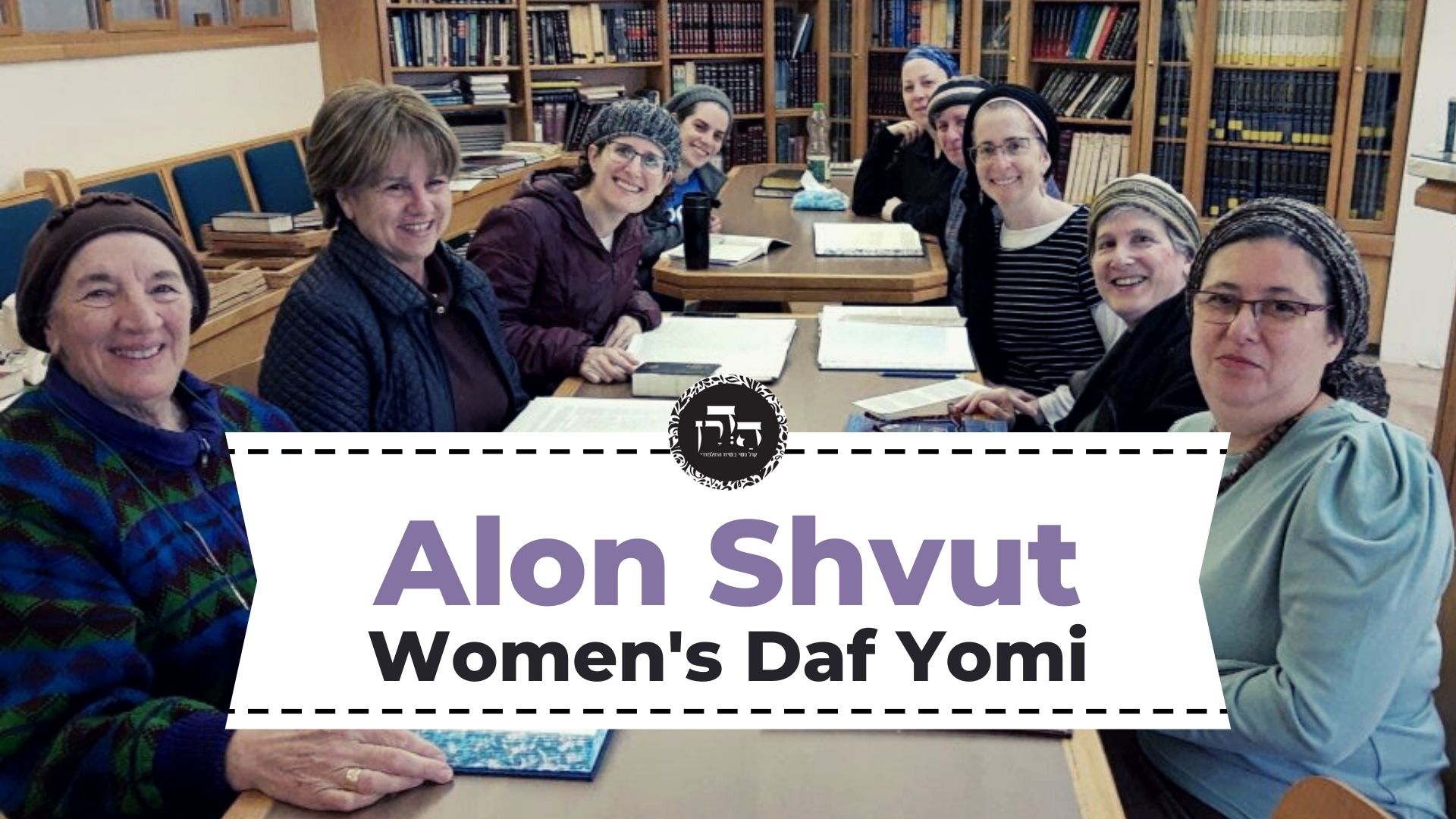Sukkah 12
אִי: מָה חֲגִיגָה בַּעֲלֵי חַיִּים, אַף סוּכָּה נָמֵי בַּעֲלֵי חַיִּים!
The Gemara asks: If that juxtaposition is the source of the halakha, say: Just as the Festival peace-offering is brought from animals, so too the sukka roofing should consist of animals. As that is clearly not the case, that verse cannot be the source for the roofing of the sukka.
כִּי אֲתָא רָבִין אָמַר רַבִּי יוֹחָנָן, אָמַר קְרָא: ״בְּאׇסְפְּךָ מִגׇּרְנְךָ וּמִיִּקְבֶךָ״, בִּפְסוֹלֶת גּוֹרֶן וָיֶקֶב הַכָּתוּב מְדַבֵּר.
The Gemara cites a different source: When Ravin came from Eretz Yisrael to Babylonia he said that Rabbi Yoḥanan said that the verse states: “You shall prepare for you the festival of Sukkot for seven days as you gather from your threshing floor and from your winepress” (Deuteronomy 16:13), and the Sages interpreted that it is with regard to the waste of the threshing floor and of the winepress that the verse is speaking. One uses grain stalks and vines for roofing the sukka, materials that are not susceptible to ritual impurity and grow from the ground.
וְאֵימָא גּוֹרֶן עַצְמוֹ וָיֶקֶב עַצְמוֹ! אָמַר רַבִּי זֵירָא: ״יֶקֶב״ כְּתִיב כָּאן, וְאִי אֶפְשָׁר לְסַכֵּךְ בּוֹ.
The Gemara asks: And say that the verse teaches that one uses the items placed on the threshing floor itself, i.e., stalks with the grain still attached to them, and the items placed in the winepress itself, i.e., vines with the grapes still attached, as roofing. Grain and grapes, like all foods, are susceptible to ritual impurity. If the verse is interpreted in this manner, the mishna’s criteria for roofing fit for a sukka could not be derived from it. Rabbi Zeira said: “Winepress” is written in the verse here, referring to the wine, and it is impossible to roof with wine. Apparently, the verse is referring to stalks and sheaves but not to produce.
מַתְקֵיף לַהּ רַבִּי יִרְמְיָה: וְאֵימָא יַיִן קָרוּשׁ הַבָּא מִשְּׂנִיר שֶׁהוּא דּוֹמֶה לְעִיגּוּלֵי דְּבֵילָה! אָמַר רַבִּי זֵירָא: הָא מִלְּתָא הֲוָה בִּידַן, וַאֲתָא רַבִּי יִרְמְיָה וּשְׁדָא בַּיהּ נַרְגָּא.
Rabbi Yirmeya strongly objects to this: Why can’t a sukka be roofed with wine? Say that it is referring to congealed wine that comes from Senir, from Mount Hermon, which is similar to a cake of figs. Since it is possible to interpret the verse as referring to the use of food for roofing, the mishna’s criteria for roofing fit for a sukka could not be derived from it. Rabbi Zeira said: This matter was in our hands, as we assumed that we found the source in the Torah for the materials fit for roofing, and Rabbi Yirmeya came and took an axe to it. He destroyed the proof by raising the matter of congealed wine.
רַב אָשֵׁי אָמַר: ״מִגׇּרְנְךָ״ וְלֹא גּוֹרֶן עַצְמוֹ, ״מִיִּקְבֶךָ״ וְלֹא יֶקֶב עַצְמוֹ.
Rav Ashi said: One may nevertheless derive the ruling of the mishna from this verse: “From your threshing floor,” indicating an item that comes from the threshing floor, but not the items placed on the threshing floor, i.e., grain, itself; “from your winepress,” but not the items placed in the winepress, i.e., grapes, itself. The verse is referring to the waste products of the produce placed on the threshing floor and in the winepress.
רַב חִסְדָּא אָמַר מֵהָכָא: ״צְאוּ הָהָר וְהָבִיאוּ עֲלֵי זַיִת וַעֲלֵי עֵץ שֶׁמֶן וַעֲלֵי הֲדַס וַעֲלֵי תְמָרִים וַעֲלֵי עֵץ עָבוֹת״.
Rav Ḥisda said that proof can be cited from here: “Go forth to the mount and fetch olive branches, and branches of wild olive, and myrtle branches, and palm branches, and the boughs of a dense-leaved tree in order to make sukkot as written” (Nehemiah 8:15). From this verse, the materials for sukka roofing can be derived.
הַיְינוּ ״הֲדַס״, הַיְינוּ ״עֵץ עָבוֹת״! אָמַר רַב חִסְדָּא: הֲדַס שׁוֹטֶה — לְסוּכָּה, וְעֵץ עָבוֹת — לְלוּלָב.
Apropos this verse, the Gemara asks: These myrtle branches are the same as those boughs of a dense-leaved tree; why does the verse mention both? Rav Ḥisda said that this is how it is to be understood. The term “myrtle branches” is referring to a wild myrtle, unfit for use as one of the four species, to be used for the roofing of the sukka. And the term “boughs of a dense-leaved tree” is referring to the myrtle, whose leaves overlie each other, to be used for the lulav, the mitzva of the four species.
מַתְנִי׳ חֲבִילֵי קַשׁ וַחֲבִילֵי עֵצִים וַחֲבִילֵי זְרָדִין — אֵין מְסַכְּכִין בָּהֶן. וְכוּלָּן שֶׁהִתִּירָן — כְּשֵׁרוֹת. וְכוּלָּן כְּשֵׁרוֹת לִדְפָנוֹת.
MISHNA: One may not roof a sukka with bundles of straw tied with rope, or bundles of wood, or bundles of twigs. And with regard to all of the bundles, if one untied them, they are fit for use in roofing the sukka, as their lack of fitness is due to the fact that the bundles are tied. And even when tied, all of the bundles are fit for use in constructing the walls of the sukka.
גְּמָ׳ אָמַר רַבִּי יַעֲקֹב: שְׁמַעִית מִינֵּיהּ דְּרַבִּי יוֹחָנָן תַּרְתֵּי: חֲדָא — הָא, וְאִידַּךְ — הַחוֹטֵט בַּגָּדִישׁ לַעֲשׂוֹת לוֹ סוּכָּה — אֵינָהּ סוּכָּה.
GEMARA: Rabbi Ya’akov said: I heard explanations from Rabbi Yoḥanan for two similar halakhot of sukka: One with regard to the halakha in this mishna that bundles may not be used in roofing the sukka, and the other with regard to the mishna below, pertaining to one who hollows out space in a stack of grain by removing sheaves from the bottom of the stack to establish a sukka for him. In that case, the space is surrounded by grain on the sides and above, and therefore it is not a sukka.
חֲדָא: מִשּׁוּם גְּזֵרַת אוֹצָר. וַחֲדָא מִשּׁוּם: ״תַּעֲשֶׂה״, וְלֹא מִן הֶעָשׂוּי. וְלָא יָדַעְנָא הֵי מִינַּיְיהוּ מִשּׁוּם אוֹצָר וְהֵי מִינַּיְיהוּ מִשּׁוּם תַּעֲשֶׂה וְלֹא מִן הֶעָשׂוּי.
The rationale for one of the halakhot is due to the decree of the storehouse. Although, fundamentally, the sukka is fit, the Sages issued a decree prohibiting its use, lest one come to use his storehouse as a sukka and fail to establish it properly. And the rationale for one of the halakhot is due to the principle: Prepare it, and not from that which has already been prepared, as no active preparation was performed. And I do not know at present which of the halakhot is due to the decree of the storehouse and which of them is due to the principle: Prepare it, and not from that which has already been prepared.
אָמַר רַבִּי יִרְמְיָה: נִיחְזֵי אֲנַן, דְּאָמַר רַבִּי חִיָּיא בַּר אַבָּא אָמַר רַבִּי יוֹחָנָן: מִפְּנֵי מָה אָמְרוּ חֲבִילֵי קַשׁ וַחֲבִילֵי עֵצִים וַחֲבִילֵי זְרָדִין אֵין מְסַכְּכִין בָּהֶן? פְּעָמִים שֶׁאָדָם בָּא מִן הַשָּׂדֶה בָּעֶרֶב וַחֲבִילָתוֹ עַל כְּתֵפוֹ, וּמַעֲלָהּ וּמַנִּיחָהּ עַל גַּבֵּי סוּכָּתוֹ כְּדֵי לְיַבְּשָׁהּ, וְנִמְלַךְ עָלֶיהָ לְסִיכּוּךְ, וְהַתּוֹרָה אָמְרָה: ״תַּעֲשֶׂה״, וְלֹא מִן הֶעָשׂוּי. מִדְּהָא מִשּׁוּם גְּזֵרַת אוֹצָר, הָא מִשּׁוּם ״תַּעֲשֶׂה״ וְלֹא מִן הֶעָשׂוּי.
Rabbi Yirmeya said: Let us see and determine which rationale Rabbi Yoḥanan applied to each halakha; as Rabbi Ḥiyya bar Abba said that Rabbi Yoḥanan said: For what reason did they say that one may not roof a sukka with bundles of straw, and bundles of wood, and bundles of twigs? It is because sometimes a person comes from the field in the evening, and he has his bundle of wood or straw on his shoulder, and he lifts it and places it atop his storage shed to dry it. And, when the festival of Sukkot arrives, he reconsiders and decides to use the shed as a sukka and the bundle on top of it for roofing. And in that case the roofing would be unfit, as the Torah said: Prepare it, and not from that which has already been prepared. From Rabbi Yoḥanan’s formulation, apparently it is unfit due to the decree lest one come to use his storehouse as a sukka and fail to establish it properly, not due to some fundamental prohibition. From the fact that this case of the bundles is prohibited due to the decree of the storehouse, that case of the stack of grain must be prohibited due to the principle: Prepare it, and not from that which has already been prepared.
וְרַבִּי יַעֲקֹב? הָךְ דְּרַבִּי חִיָּיא בַּר אַבָּא לָא שְׁמִיעַ לֵיהּ.
The Gemara asks: And why was Rabbi Ya’akov unable to arrive at Rabbi Yoḥanan’s opinion based on the halakha cited in his name? The Gemara explains: It is because he did not hear this statement of Rabbi Ḥiyya bar Abba, and there was no other proof.
אָמַר רַב אָשֵׁי: אַטּוּ חֲבִילֵי קַשׁ וַחֲבִילֵי עֵצִים מִשּׁוּם גְּזֵרַת אוֹצָר אִיכָּא, מִשּׁוּם ״תַּעֲשֶׂה״ וְלֹא מִן הֶעָשׂוּי לֵיכָּא? וְהַחוֹטֵט בְּגָדִישׁ, מִשּׁוּם ״תַּעֲשֶׂה״ וְלֹא מִן הֶעָשׂוּי אִיכָּא, מִשּׁוּם גְּזֵרַת אוֹצָר לֵיכָּא?
Rav Ashi said: The distinction of Rabbi Yoḥanan between these two cases is difficult. Is that to say that bundles of straw and bundles of wood are unfit roofing due to the decree of the storehouse and not due to the principle: Prepare it, and not from that which has already been prepared? Is that ultimately the principle underlying the decree of the storehouse? And on the other hand, in the case of one who hollows a stack of grain, is the sukka unfit due only to the principle: Prepare it, and not from that which has already been prepared, but not due to the decree of the storehouse? Rather, there is no distinction between the halakhot and both reasons apply to both.
וְרַבִּי יוֹחָנָן אָמַר לָךְ, הָכָא דְּקָתָנֵי: ״אֵין מְסַכְּכִין בָּהֶן״, לְכַתְּחִלָּה הוּא
The Gemara notes: And Rabbi Yoḥanan could have said to you, in response to Rav Ashi, that it is not so because the halakhot are formulated differently in the respective mishnayot. Here, in the mishna pertaining to bundles, where it teaches: One may not roof with them, it is ab initio
דְּאֵין מְסַכְּכִין מִשּׁוּם גְּזֵרַת אוֹצָר, הָא דְּאוֹרָיְיתָא שַׁפִּיר דָּמֵי. הָתָם דְּקָתָנֵי ״אֵינָהּ סוּכָּה״ אֲפִילּוּ דִּיעֲבַד — מִדְּאוֹרָיְיתָא נָמֵי אֵינָהּ סוּכָּה.
that one may not roof, due to the decree of the storehouse issued by the Sages; but by Torah law, it seems well to do so. There, in the mishna pertaining to the stack of grain, where it teaches: It is not a sukka, it means that not only by rabbinic decree, but even after the fact, by Torah law as well, it is not a sukka.
אָמַר רַב יְהוּדָה אָמַר רַב: סִכְּכָהּ בְּחִיצִּין זְכָרִים — כְּשֵׁרָה. בִּנְקֵבוֹת — פְּסוּלָה.
§ Rav Yehuda said that Rav said: If one roofed a sukka with convex arrow shafts, which are made of wood with a protrusion on the end that is fitted into the socket of the metal arrowhead, the sukka is fit. These shafts are flat wooden utensils, which are not susceptible to ritual impurity. Therefore, they are fit roofing for a sukka. If, however, one roofed his sukka with concave arrow shafts, which have a socket into which a protrusion from the metal arrowhead is inserted, the sukka is unfit. Since these shafts are wooden utensils with a receptacle, they are susceptible to ritual impurity. Therefore, they are unfit roofing for a sukka.
זְכָרִים כְּשֵׁרָה, פְּשִׁיטָא! מַהוּ דְּתֵימָא: נִיגְזוֹר זְכָרִים אַטּוּ נְקֵבוֹת, קָא מַשְׁמַע לַן.
The Gemara asks: The fact that if one roofed a sukka with convex arrow shafts, the sukka is fit is obvious. It is no different from roofing with straight, smooth reeds. The Gemara answers: Stating this halakha is necessary. Lest you say: Let us issue a decree and prohibit roofing with convex shafts due to the prohibition against roofing with concave shafts, therefore Rav teaches us that no decree is issued, and convex shafts are fit roofing.
(אָמַר מָר:) בִּנְקֵבוֹת פְּסוּלָה, פְּשִׁיטָא! מַהוּ דְּתֵימָא: בֵּית קִבּוּל הֶעָשׂוּי לְמַלּאוֹת לָא שְׁמֵיהּ קִיבּוּל, קָמַשְׁמַע לַן.
The Master said: If one roofed a sukka with concave arrows, the sukka is unfit. The Gemara asks: This is obvious. All wooden receptacles are susceptible to ritual impurity. The Gemara answers: Stating this halakha is necessary. Lest you say: A receptacle that is designated to be permanently filled, its status is not that of a receptacle, as a receptacle is typically filled and emptied; in this case, once the arrowhead fills the receptacle, it remains there, therefore Rav teaches us that it is deemed a receptacle and is not fit roofing.
אָמַר רַבָּה בַּר בַּר חָנָה אָמַר רַבִּי יוֹחָנָן: סִכְּכָהּ בַּאֲנִיצֵי פִשְׁתָּן — פְּסוּלָה. בְּהוּצְנֵי פִשְׁתָּן — כְּשֵׁרָה. וְהוּשְׁנֵי פִשְׁתָּן, אֵינִי יוֹדֵעַ מַהוּ.
§ Rabba bar bar Ḥana said that Rabbi Yoḥanan said: If one roofed a sukka with bundles of combed flax, the sukka is unfit, as flax at that stage of processing is the raw material from which threads are spun, and it is susceptible to ritual impurity. If one roofed a sukka with stalks of flax, the sukka is fit. Since they remain in their natural state and have not been processed in any way, their legal status is that of any tree, and they are not susceptible to ritual impurity. And if one roofed with the hoshen of flax, stalks at an intermediate stage of processing, I do not know what their status is, i.e., whether or not they are fit for roofing.
וְהוּשְׁנֵי עַצְמָן אֵינִי יוֹדֵעַ. מָה נַפְשָׁךְ: אִי דְּיִיק וְלָא נְפִיץ — הוּשְׁנֵי קָרֵי לֵיהּ, אֲבָל תְּרֵי וְלָא דְּיִיק — הוּצְנֵי קָרֵי לֵיהּ, אוֹ דִלְמָא: תְּרֵי וְלָא דְּיִיק נָמֵי הוּשְׁנֵי קָרֵי לֵיהּ.
Rabba bar bar Ḥana added: And when Rabbi Yoḥanan used the term hoshen of flax itself, I do not know to what stage of processing the flax he was referring. Which way do you look at it? Is it that if one crushed the flax and did not comb it, Rabbi Yoḥanan calls it hoshen, but if he soaked it and did not crush it, Rabbi Yoḥanan calls it hotzen, because he has not actually begun processing the flax itself? Or, perhaps if he soaked it and did not crush it, Rabbi Yoḥanan calls it hoshen, while hotzen is reserved for flax that was not processed at all.
אָמַר רַב יְהוּדָה: הָנֵי שׁוּשֵׁי וּשְׁווֹצְרֵי — מְסַכְּכִין בְּהוּ. אַבָּיֵי אָמַר: בְּשׁוּשֵׁי מְסַכְּכִין, בִּשְׁווֹצְרֵי לָא מְסַכְּכִין. מַאי טַעְמָא, כֵּיוָן
§ Rav Yehuda said: With regard to these wide licorice and wormwood leaves, one may roof his sukka with them, since these are not consumed by people. Their legal status is that of any other plant; they are not susceptible to ritual impurity. Abaye said: With licorice leaves, one may roof his sukka; with wormwood leaves, one may not roof his sukka. What is the reason for this distinction? Since























